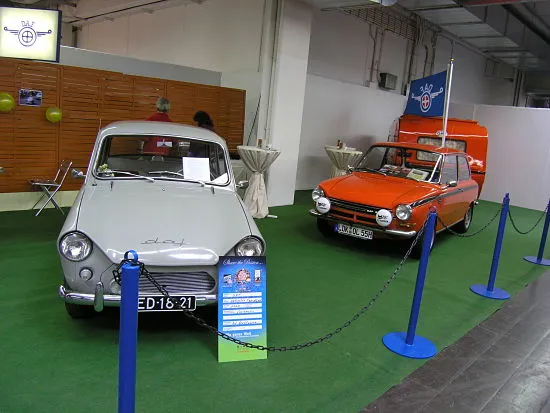DAF Tyres

Classic DAF Tyres
If your Skoda is not listed, don't panic! Please give us a call on:
01302 711 123
or
Email: sales@longstonetyres.co.uk
History of DAF Motor Company
The DAF 600 was the first passenger automobile, featuring a unitary steel body and a front-mounted, air-cooled two-cylinder boxer engine. The engine drove the rear wheels through a centrifugal clutch and the VariomaticCVT gearbox. The manner this was built avoided the need for a differential, with the drive belts compensating for the speed difference in the bends.
This functioned as a restricted slip differential. The automobile had all-around independent suspension, with MacPherson struts and a transverse leaf spring at the front and a coil-sprung semi-trailing arm arrangement at the back. In the following year, the first 600s rolled off the assembly line. The 750 was the following model, with a bigger 749 cc twin.
Later, DAF manufactured a more opulent vehicle known as the Daffodil, which was separated into three types with the numbers DAF 30, DAF 31, and DAF 32. When Giovanni Michelotti's 44, a bigger middle-class car, was released in 1966, the 32 was renamed the 33. The 44 had an entirely new design, both visually and technically, although it had the same layout as the "A type's" with the primary difference being its 850 cc two-cylinder engine and full swing axle rear axle design as opposed to the A-type semi-trailing arms.
The 1968 DAF 55 had a larger 1,108 cc OHV four-cylinder water-cooled engine. Its body was different from the 44 in that it had a revised front to accommodate the larger engine and radiator, wider taillights, and a more luxurious interior. The front suspension was replaced with MacPherson struts, torsion springs, and an antiroll bar, rather than transverse leaf springs.
The DAF 66 was released as the 55's replacement. It had new, boxy front appearance as well as a new rear axle design. The two drive belts powered a differential, and the axle was altered from a swing-axle design to a de Dion axle with leaf springs. It marked a significant improvement over the handling of the swing axles on the previous 33, 44, and 55 versions.
Volvo acquired a 33% holding in DAF in December 1972, with the intention of eventually acquiring a bigger stake. On January 1, 1975, they expanded their stake to 75% and took over the firm and the NedCar facility. Volvo discontinued the 33 and 44 models and rebadged the DAF 66 as the Volvo 66, with larger bumpers and a safety steering wheel.
The DAF 46 was created with the help of Volvo and was essentially a 44 with the rear axle of a 66 and a single belt Variomatic (half of the 66's gearbox). A major flaw in this design is that a broken drive belt would render the vehicle immobile. The final DAF design, coded P900, was initially meant to be the DAF 77 and was eventually released as the Volvo 300 series in 1976, first as the Volvo 343 three-door hatchback with the Variomatic gearbox.
Following initial weak sales, the range was enlarged into the 340/360, with a five-door variant and manual gearbox option, and the 340/360 range became a sales success, eventually exceeding 1.3 million vehicles by the time manufacture terminated in 1991. The succeeding Volvo 440/460/480 models, as well as the first generation S40/V40 vehicles, were also manufactured at the NedCar facility until Volvo sold its stake to Mitsubishi Motors in 2001, therefore ending Volvo's association with the former DAF plant after almost thirty years. VDL NedCar presently owns the factory and contracts produces select MINI cars for BMW.
Prototypes and special cars
DAF produced a large number of prototypes for such a tiny firm. Famous coachbuilders such as Giovanni Michelotti and OSI also produced vehicles using the DAF system. For example, consider the OSI City Car, which was transformed into a tiny. Michelotti's "Shellette" beach vehicle, which was subsequently modified to employ Fiat 850 underpinnings, was also there.
